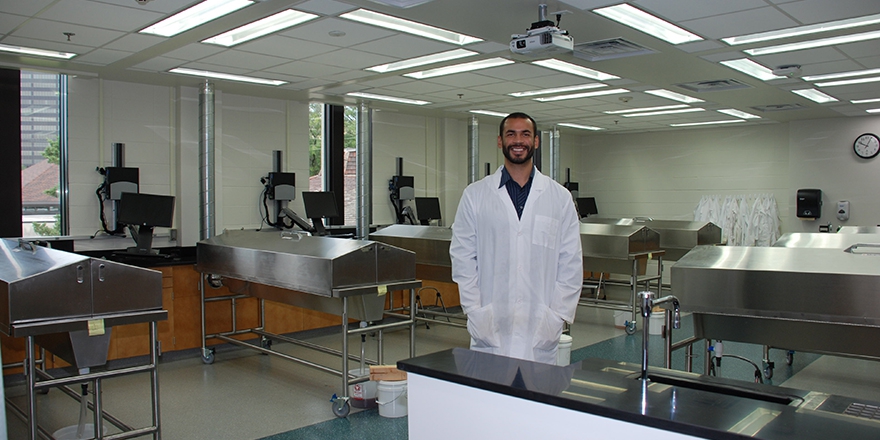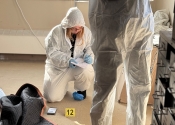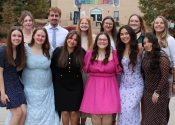
College of Saint Mary opens unique 8-cadaver lab just in time for the University’s first cohort of physician assistant students
Omaha, Neb. – College of Saint Mary opened its new, 8-cadaver lab this fall semester – just in time for the University’s first cohort of physician assistant studies students. The number of cadavers is unique for a small college in the Midwest. Even the University of Nebraska-Lincoln cadaver lab has only three. But there’s a very good reason.
As the demand for primary care physicians increases, physician assistants will meet a critical need, says Dr. William Humphrey, who oversees the new cadaver lab, particularly in rural areas where there is a lack of skilled primary care.
“Our graduates need to be able to function independently and with minimal assistance,” he says. These CSM graduates can provide the skilled medical care needed in the many underserved areas, such as the rural counties of the Midwest.
As PAs are educated to examine patients, diagnose injuries and illnesses, and provide treatment, an immersive and highly-interactive medical education is crucial; a cadaver-based education is considered the gold standard.
Unfortunately, PA students usually aren’t afforded that kind of first-up, hand-on immersive experiences with cadavers. They commonly work with prosected cadavers, which have already been dissected by either skilled anatomists, instructors, or medical school students studying to become doctors.
“The impact of having to learn from prosected cadavers,” says Humphrey, “is that students lose the experience of independent discovery.
“Our PA students will have the privilege of the primary dissection of cadavers, and experience in clinical anatomy,” he says. That primary experience helps set CSM’s program apart.
“Being able to dissect and actually see and feel the tissues, bones, muscles, and organs we have studied from a textbook is really amazing,” says PA student Hannah Pauley. “I have already noticed my knowledge and understanding of anatomy and the human body increasing.”
“Each of our bodies, and their future patients, is unique,” says Humphrey. “It’s only through many hours of cadaver dissection in the lab that the students are able to appreciate the details and nuances that make up a human body.”
Other health science and natural science students will also benefit from the lab. They will be able to visit the lab and learn through observations and prosection activities, which help bring textbook concepts to life.
The cadavers are both the students’ “silent teachers” and their first patients. The experience of working with them shows the students, firsthand, the physical differences of each person. The students also learn more than gross anatomy. They learn respect and take on affective responsibility, develop compassion for their fellow man, and gain confidence in their abilities.
CSM’s first PA cohort of 30 students, most from Nebraska and Iowa, will work in teams of three to four. Compare that to larger institutions with several health science programs which may have five to six students per cadaver, says Humphrey. Having eight cadavers and a smaller class size allows CSM students a very active role in the lab.
The 1,900 square foot lab includes specialized downdraft tables, which are designed for safety as they actively ventilate chemical fumes away from the students. Dual LED surgical lights above each cadaver provide high-efficiency, medical grade lighting that effectively highlights the color and textural differences between subtly varied tissues. Ten wall-mounted computers throughout the room enhance the students’ educational experience.
For Pauley and her fellow PA students, being able to work in the new CSM lab and perform the primary dissection is life-changing.
“I am extremely grateful for the opportunity to work and learn in such a well-equipped lab,” she says.
“Working with my cadaver and observing just how the human body looks and feels is an experience I know I will never forget.”
The cadavers come through the Deeded Body Program at the University of Nebraska Medical Center. Each cadaver will remain in the CSM lab for approximately ten months. At the end of the school year, students take place in a ceremony honoring the gift of the donor and his or her family. The cadaver is then returned to their loved ones or UNMC.











